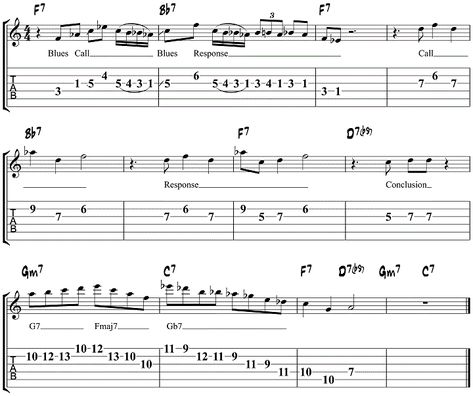 Quick NavigationWhat is Improvising on the Piano?How to ImproviseImprovising For BeginnersIntermediate Improv ApproachAdvanced ImprovPiano Improv for Total Beginners – Pianote
Quick NavigationWhat is Improvising on the Piano?How to ImproviseImprovising For BeginnersIntermediate Improv ApproachAdvanced ImprovPiano Improv for Total Beginners – Pianote
What is Improvising on the Piano?

Once they get past the learning stage, most musicians have wondered about improvisation at least once.
A commonly asked question is, “What is improv?”
Though some people debate the exact definition, here is the consensus:
It’s the unprepared rearrangement of previously learned material.
Improv has been a part of music for a long time. Some of the most famous classical composers excelled in this field. Historians know Mozart, Bach, and Chopin wrote many of their pieces through improvisation. Some pianists can read sheet music and learn songs reasonably well. However, many don’t know how to improvise. Or don’t they?
The fact is, everyone knows how to improvise. Talking to people at work or school, you don’t plan out what you’re going to say beforehand. You listen and respond to others on the spot. This is improvising. Doing it with music isn’t much different. Instead of words, there are notes.
If you didn’t know any words, imagine how difficult a regular conversation would be. Beginner pianists who don’t know any songs are often in this boat. Improvising requires that you know how to play at least a few songs. Otherwise, you can’t communicate without words. Improvisation on the piano is possible through two different ways:
- Musical knowledge
- Muscle memory
Let’s say you learn one of your favorite songs with sheet music. You may feel like you can’t play it without the sheet music.
Lots of pianists get stuck, thinking they have to play songs the same way each time. There’s nothing wrong with this concept. In fact, the classical piano community welcomes it.
However, the idea of improvisation abandons strict memorization. Pianists can improvise within a song or do it freely. Improv requires more internal creativity than reading sheet music.
How to Improvise

Countless techniques can improve your improvisation skills. Even some advanced piano players see improv as immensely difficult. Pianists often discount their own improv skills before they even try it. Once they start improvising, they often feel freer and more creative. However, if you’re a beginner, you may not have the ability to do it at a high level just yet. But you can change that.
Improvising For Beginners
Let’s say you know little to no songs on the piano. Fortunately, there are plenty of ways to focus on improv at a lower level. Here’s an excellent method:
- Learn a simple song you enjoy
- Figure out what chords you’re playing
- If song is in one key, learn the major scale for that key
- Learn 1-5-8 basic left hand voicings
- Experiment improvising with the major scale
If you don’t already know a song, it would be best if you learned one. It doesn’t need to be too difficult as long as it has a few chords. Once you learn it, figure out the chords you’re playing. If you don’t know how to go about this, do a quick internet search for major and minor piano chords. Then, you can easily identify the song’s chords. Another possible quicker way is by adding “chords” after the song when searching.
Chords and scales are the basis of improvisation. Every song you know on the piano has chords. A C major chord implies the C major scale. As I said, anyone can improvise whether they believe it or not. If you’ve never done it, here’s a quick way anyone can do it:
In your left hand, play the notes C, E, G, and B. This chord is a standard C major 7th. Then, use your right hand to play the major scale. Play this scale up and down a few times until you’re comfortable with it. Now, hold down the left-hand chord and experiment with random notes in the scale with your right hand. If you play the notes in the scale, nothing you do can sound bad. So, feel free to play whatever you desire. This exercise is really improvisation in a nutshell.
Let’s go back to improvising within a song now. After learning the chords in a song, figure out the song’s key. Most basic pop songs have only one key center. In other words, you can play one scale over every chord, and it’ll sound good. For example, let’s look at the popular song, “Don’t Stop Believin'” by Journey. This song has 4 chords and is in the key of E major. If you know the E major scale, you can already improvise over the whole song. Learn the major scale that goes along with your song of choice.
Now, it’s just about putting the left and right hands together. When you improvise with your right hand, you don’t always need to play full chords in your left hand. A more comfortable and better-sounding left-hand voicing is 1-5-8. “What does that mean?” 1 is the root of the chord, 5 is the fifth, and 8 is the root an octave above the 1. this voicing is only 3 notes. Lots of pianists and guitarists describe it as a power chord. By not playing the 3rd of the chord, you create a stronger base. Figure out the 1-5-8 of your song’s chords and practice the transitions until they’re seamless. The next part is where the fun begins.
Play and hold the 1-5-8 of the first chord. As you’re holding it, experiment with notes in the scale. Once you’re ready to move on, play the next chord in your left hand, and repeat the process. Most simple songs only have 4 chords or less, so it shouldn’t take too long. You might be surprised at easy improv really is. You don’t need to know complicated music theory or a million scales.
Once you’re even more comfortable, try improvising along with the recording of the song. Up until this point, incorporating rhythm hasn’t been necessary. Playing along to the song guarantees you’ll start thinking more about rhythmic ideas.
Intermediate Improv Approach
If you already understand basic improvisation, you may be ready to go further. An intermediate approach dives a bit deeper than basic chords and scales. This level introduces licks and the blues scale.
Those who enjoy rock and blues have undoubtedly heard the blues scale. It’s one of the most classic ways to improv over chord changes. Let’s start with a C blues progression, with the chords C7, F7, and G7. The C blues scale works over all of these chords. The notes in this scale are C, Eb, F, F#, G, and Bb. You might notice that some of these notes aren’t in the chords. However, clashing notes are classic blues and rock characteristics.
Blues Scale Method
- Learn blues progression with root position chords
- Practice improvising over each chord with the blues scale
- Rhythmicize left-hand chords on beats 1 and the & of 2
- Incorporate classic blues licks
Street pianists on Youtube love the blues scale. Everyone recognizes the sound, and that’s why people stop to listen. Improvising with the blues scale isn’t as hard as it seems. After all, it’s just one scale. Rock and blues are heavily rhythmic-based, so you may want to use a backing track. Doing so frees up your left hand from having to keep the rhythm going. It can be fun to turn on a blues backing track and play along with your right hand. The more you practice this method, the better you’ll get at improv.
“Bite the bullet.”
“Don’t count your chickens before the eggs have hatched.”
“Hit the nail on the head.”
You’ve probably heard these phrases before. They’re a familiar series of words that people use and quote. Phrases are to English as licks are to music. Countless licks revolve around the blues scale. If you’re thinking about each note as you improvise, that can be compared to thinking about each word you say as you talk. Lick-based improvisation is like saying a bunch of relatable phrases as you speak. It’s best to use a mixture of these techniques.
Advanced Improv
Advanced improv usually means a wide variety of things. Rather than solely focusing on scales for an extended period, you incorporate many other techniques. Here are some of them:
- Encirclements
- Sequencing
- Melodic retention
- Dissonance and resolution
- Dynamics
- Telling a story through improv
- 16th-note licks
These methods aren’t necessarily for advanced players only. Beginners and intermediates can incorporate them as well. One of the easiest and most effective improv tips is to add dynamics. At some point in your life, you’ve probably had a boring teacher. This teacher may have talked at the same volume or tone all the time. Improvising without dynamics creates that same effect. No matter your skill level, you’ll benefit by changing up the dynamics when you improvise.
Improvisation is one of the greatest ways to free your mind from constraints. If you think that you can’t improvise on the piano, it may be worth your time to try a method in this article. You might just realize how simple it can be.
